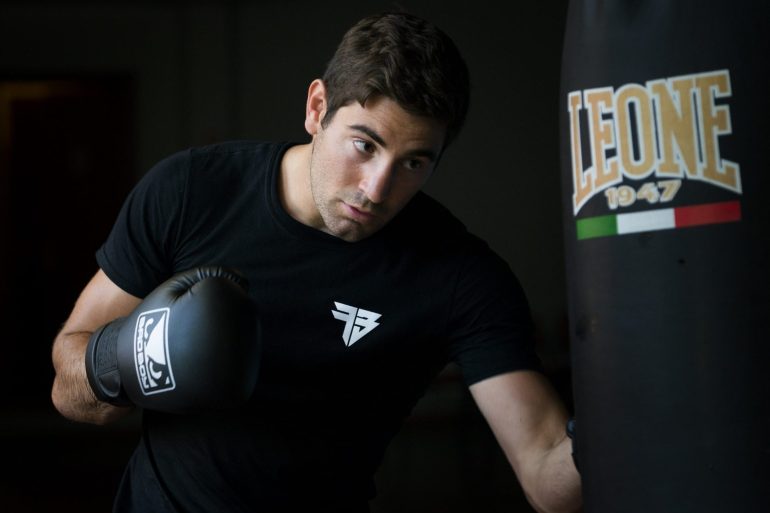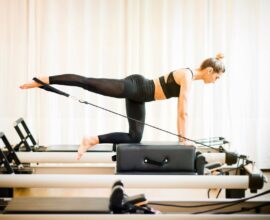Boxing. The origins, the rules and some interesting facts
When was boxing created?
Boxing is one of the oldest combat sports. In Italy we call it pugilato, from the Latin pugilatus and pugil, which refers to the athlete who fights with the pugnus, the fist. But we also call it with the French term boxe.
Thanks to the Sumerian, Assyrian-Babylonian and Hittite bas-reliefs found by archaeologists during excavations in the Middle East we know that the first boxing matches date back to the 3rd and 2nd millennium BC. At the time, boxers fought with bare hands or bandage wrappings.
A Minoan fresco from 1650 BC circa shows the first use of gloves. It depicts two young boxers fighting with their hands covered by what appear to be boxing gloves.
In ancient Greece, boxing was a widespread and popular physical activity, included as a new discipline in the 13th Olympiad in 688 BC. The boxers used leather bands around the knuckles to protect their hands and fought until the opponent surrendered or until one of the two was no longer able to continue. There were no rounds or weight categories. But thanks to the finds we know the fighting style in detail. Boxers generally held the left foot before the right one, the left arm guarding the face, while the right arm fully back ready to strike. The athletes usually punched the opponent’s face and there is little evidence that they punched other body parts.
Boxing was also known and practiced in ancient Rome. The Roman boxers did not just use leather bands to protect their hands but made them real weapons. In fact, they used the caestus, a combat glove with pieces of metal between the leather bands. The fights took place in the amphitheaters and often lasted until the death of one of the boxers.
With the spread of Christianity, boxing was banned for its excessive brutality. In addition, the abolition of the Olympics by Emperor Theodosius I, who considered them a pagan festival, helped the sport disappear. This until the 16th century when the use of the sword became less frequent and the interest in the art of fighting with bare hands revived.
The main rules of boxing. What should athletes pay attention to?
Professional athletes and amateurs practice boxing inside a square area called the ring. There are several variations of this sport, such as gym boxing, soft boxing, light boxing, boxing competition and boxing in action, which do not involve a real fight.
The boxing regulations require athletes to wear mandatory protections:
- Bandage: athletes must bandage their hands before putting on gloves. The bandages used by professionals are longer than those of amateurs, while the gloves are lighter. It is forbidden to wear rings or use substances that change the consistency of the bandage. Once the match is over and before announcing the verdict, the referee checks the bandages and can disqualify the boxer if they do not meet the requirements;
- Helmet: boxers must wear it after entering the ring to allow the referee to check their condition. The helmet must be AIBA (International Boxing Association) approved. The use of the helmet depends on the competition regulations;
- Protection belt: it is necessary to protect boxers from accidental punches below the belt, prohibited by the regulations;
- Chest corset: for women only, to protect the chest;
- Boxing gloves: boxers put them on before entering the ring and take them off at the end of the match. Taking off the gloves ahead of time shows the willingness to leave the match. There are different types of gloves: for the punching bag, for amateurs, for professionals, with antishock, for sparring and for children.
- Mouthguard: it cannot be red, even partially, since it would hide the leakage of blood.
If the athletes voluntarily remove the protections, the referee sanctions them with an official warning and a consequent loss of points. The referee also sanctions involuntary loss, if negligent and repeated, for example in the event of a fall of the mouthguard following a regular punch. On the other hand, if a protection breaks, the athlete must replace it in five minutes or the match is suspended.
Regular punches are those with closed fists that hit the opponent with the padded area of the glove matching the knuckles (the space between the end of the metacarpus and the phalanx). In addition, the punches must impact the front or side of the opponent’s torso from the belt up. The belt is level with the iliac bones.
Non-regular punches, such as backhands, slashing or palm punches, are prohibited. Among the foul plays are also hitting with the head, the shoulder or the forearm, turning around and hit the opponent. But also hitting them while on the ground, or in invalid parts, such as below the belt, in the nape, in the kidneys or in the back.
Here are the actions considered fouls:
- Use the ropes (bouncing or leaning on them, touching them);
- Hold the opponent and punch him;
- Push the opponent, push their head, or weight on them from above;
- Dangerous behaviors (lowering the head under the opponent’s belt or putting the head under their chin);
- Unfair behaviors (stepping on the opponent’s toes);
- Simulation;
- Lack of competition (offending the opponent, running on the ring, turning away from the opponent);
- Disobey the referee;
- Bite;
- Take off the mandatory protections;
- Move the glove to obstruct the opponent’s vision;
- Punch despite break or stop orders.
If a boxer, after regular punches, is on the ground, partially outside the ropes, leaning on them, or in passive defense, the referee calls the Stop order and starts the count to give them a moment of rest. The count lasts from a minimum of 8 seconds to a maximum of 10.
If the boxer fails to recover within 10 seconds, the referee calls the Out order, interrupts the match and issues the verdict of K.O (Knock Out). But, at the 8th second break, the referee can ask the troubled boxer if he wants to continue. If not, he suspends the match and then issues the verdict of K.O.T (Technical Out of Combat). It is possible that, if the boxer needs help, the referee immediately calls the Out and the doctor.
Therefore, a match can end within the scheduled rounds or due to abandonment, KO, the intervention of the doctor or to force majeure. In addition, the referee, the doctor, the commissioner can intervene to stop a match before the time. However, depending on the situation, the verdict is decided by the referee or the judges.
3 interesting facts about boxing
Here are 3 interesting facts about boxing that not everyone knows:
- In the Iliad, Homer tells that the Mycenaean warriors used to include boxing tournaments to honor those fallen in war;
- The first known boxing match dates back to 1681, when Christopher Monck, Duke of Albemarle, arranged a match between his butler and his butcher. The latter won;
- In the 18th century boxing was called the noble art of defense. For this reason James Figg, the first known boxer, wrote “Master of the noble science of defense” on his business card.
Buglioni Boxing Academy by Leone 1947, the noble art at Forte Village Resort
Forte Village is the award-winning resort surrounded by the wonderful Sardinian sea where boxing fans can learn the secrets of boxing. At the Boxing Academy by Leone 1947 an exceptional coach awaits them: the international champion Frank Buglioni.
The Boxing Academy is inside the wonderful Sport Academy Center. The Center has a fully equipped gym and a regulatory ring. The Boxing Academy offers five lessons, from Monday to Friday, with the option to book private lessons. It is open to adults and children, from the age of 8 years. And all participants receive the training kit upon registration.
Do you want to experience an unforgettable vacation and train with a great boxing champion like Frank Buglioni? Discover the Forte Village Resort in Sardinia






